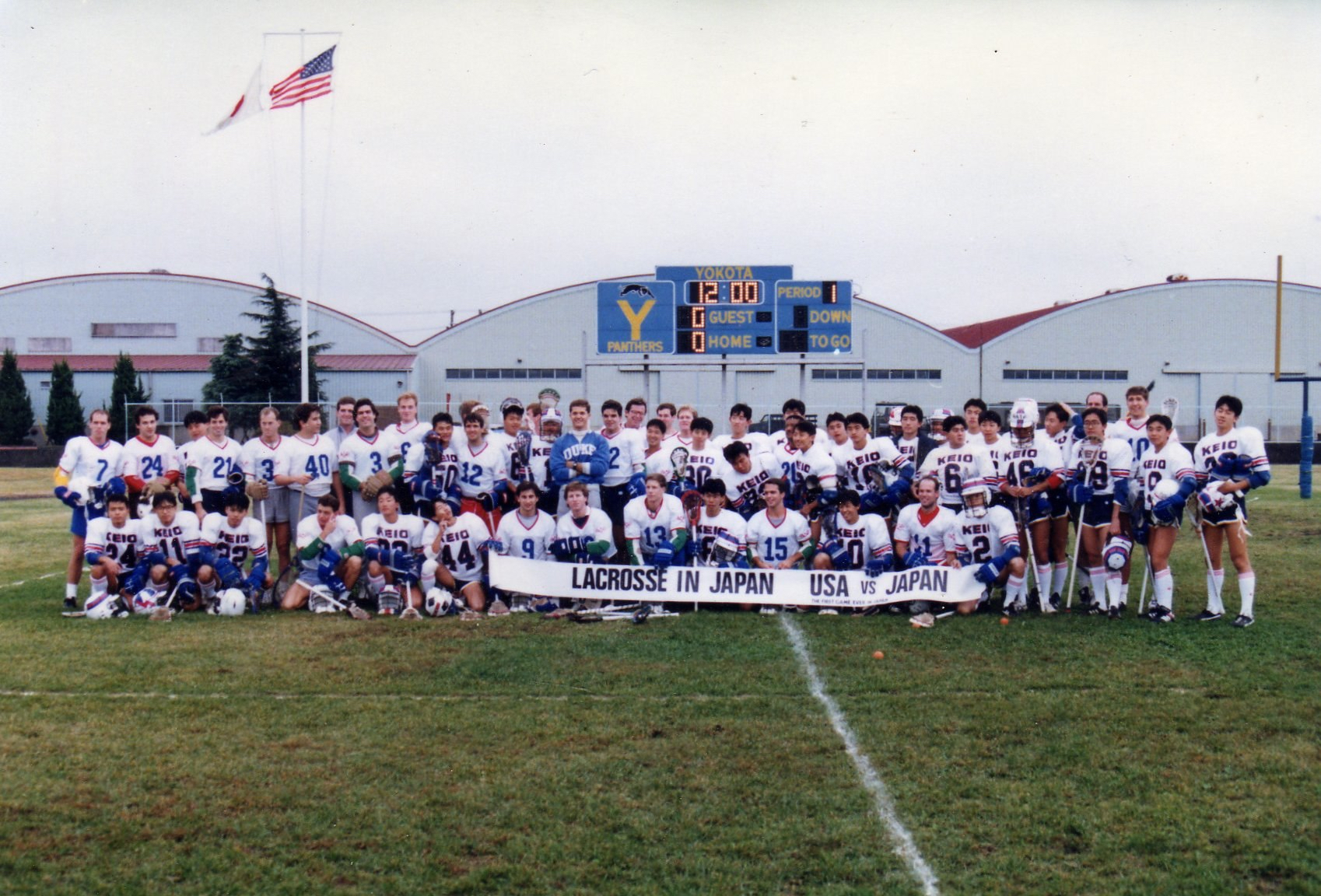It all started with some eager college students at Keio University in Tokyo in 1986.
Yusuke Sasaki and nine of his friends went to the U.S. and Canadian embassies to try to connect with lacrosse players because the sport hadn’t yet gained traction in Japan. They were ultimately introduced to Norio Endo, a Japanese-American businessman and graduate of Johns Hopkins University, a lacrosse powerhouse in America.
Though Endo himself didn’t play lacrosse, he was intrigued by the idea of helping bring the sport to Japan.
“At the time, Japan and the United States had strong friction, such as China and the United States now have,” Sasaki said. “Because he was Japanese-American, he had a strong passion in improving the communication between our two countries.”
Endo encouraged the 10 Keio freshmen to develop lacrosse in Japan themselves, without the help of a big corporation or the government.
When they were sophomores, they traveled to several other universities across Japan, aiming to recruit players. The Japan Lacrosse Association was officially founded in 1987, and the reliance on student recruitment, absent a governing body, became a foundational principle for the organization.
“In the United States, the NCAA has autonomy. It’s pretty well established,” said Sasaki. “In Japan, we don’t have that. That’s a reason why lacrosse was very independent starting up. Our basic principle was independence and an organization managed by students.”
This philosophy was challenged early. Akio Morita, the co-founder of Sony Corporation, reached out and offered to make a US$1 million donation to the JLA.
“Norio Endo refused,” Sasaki said. “We were shocked. If we had $1 million, it was going to be easy to purchase the equipment and make reservations for the fields. But he said, ‘You have to fundraise by yourself. Don’t depend on the government. Don’t depend on the big corporations.’”
In addition to a commitment to self-sufficiency, the JLA was also guided by other founding principles. All coaches were highly vetted and needed demonstrated lacrosse experience During its early years, the JLA welcomed coaches from Johns Hopkins to Japan three times. Japanese players also participated in Johns Hopkins’ summer camps.
And, in alignment with their refusal to take financial support from the government or corporations, the JLA also remained steadfast in only allowing college students to push the spread of the sport.
The organization also maintained its commitment to using the sport to foster calmer relations between the U.S. and Japan. In 1987, when Johns Hopkins sent a coach and four players to visit Japan and teach lacrosse to the 10 Keio freshmen, it was the start of the “Lacrosse Makes Friends” philosophy.
“The concept of Lacrosse Makes Friends is an exchange between the United States and Japan,” Sasaki said. “We will get to know each other through lacrosse at different universities. That’s the reason why we have seen rapid growth.”
As the JLA highlighted in a presentation to World Lacrosse in 2010, “Lacrosse in Japan started not with a mere goal of spreading sports, but with an aim of building individual communication and cultural international relations.”
In April 1988, the Japan Lacrosse Student League was founded. The next year, Johns Hopkins and the Australian National Team were invited to Japan to participate in the first International Lacrosse Friendship Games.
The association saw exponential growth, from just 21 players in 1986 to nearly 9,000 in 1993 to a peak of nearly 18,000 in 2017. There has been particular interest on the women’s side, with women accounting for approximately 60 percent of current participation. There are now 300 college teams and 100 club teams throughout the country.
However, youth participation still needs to grow, which can be aided by coaching development.
There are approximately 50 high school men’s and women’s teams in Japan, and only some of the coaches have prior experience with the sport. The JLA has a coaching certification program – the JLAcademy – that offers both a one-day course and year-long classes. One-day class participants receive a “Grade B” certification, while those who are in the extended training receive a “Grade A” certification.
All collegiate coaches have Grade A certification.
“Lacrosse coaches play a significant role not only in competitive coaching, but also in team administration and management,” said JLA Chief Operating Officer Kou Teramoto. “We believe it is important to increase the number of such leaders in high school teams as well.”
Finding and developing more coaches will only help to continue to foster the reach of the game both within Japan and internationally.
Moving forward, the JLA will continue its work to spread the sport of lacrosse around Japan, recognizing the very foundation of why it is such a valuable entity.
“The important thing is to remain aware of why we play sports, why we love sports and why we play lacrosse,” Teramoto said. “Lacrosse in the United States is great, and lacrosse in Asian countries is great, and both are equally valuable. The beauty of lacrosse is that you can make friends from all over the world. Lacrosse has no borders.”







